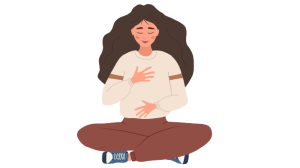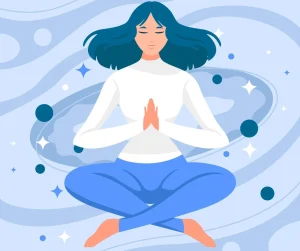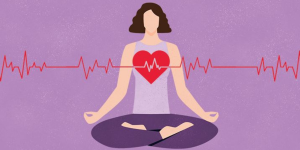
Breaking The Cycle of Chronic Dissatisfaction
Breaking The Cycle of Chronic Dissatisfaction Do you find yourself constantly chasing one goal after the other? Is it difficult for you to savor happy

Breaking The Cycle of Chronic Dissatisfaction Do you find yourself constantly chasing one goal after the other? Is it difficult for you to savor happy

The Quiet Effects of Chronic Stress: How To Overcome It? Everyone knows that stress is not good for us. However, one pertinent question is –

How To Approach Mindfulness During Stressful Situations? In today’s times, mindfulness practices have become pretty well known as stress management practices. Even if one does

Managing emotions mindfully Have you ever been told you were acting unreasonably or you blew things out of proportion? We are taught to express our

On World Hypertension day, here is our sharing on how stress leads to hypertension and what you can do on a daily basis to directly

Historically, a pandemic seems to have occurred once in a 100 years, roughly. That means, for most of us alive today, this is a completely

Anxiety and coping with it consumes a lot of energy for many of us. If you are prone to anxiety, you know that it feels

“There is nothing either good or bad but thinking makes it so.”“The fault dear Brutus, is not in our stars, but in ourselves, that we

If you’re new to the term “emotional eating,” reflect on these questions below: Do you eat to feel better (to comfort yourself when feeling upset,

May is Better Sleep Month, so let’s explore sleep, one of the elements of our lifestyle that we don’t pay conscious attention to, unlike dieting or exercising. You must know that not getting enough sleep over a long period of time could signal a deeper psychological concern and can have further implications on your mental health.

We specialize in combining psychotherapy with deep wellness practices like mindfulness and meditation and creating a customized mental health plan for individuals and organisations.
We specialize in combining psychotherapy with deep wellness practices like mindfulness and meditation and creating a customized mental health plan for individuals and organisations.

A young woman from another country moved with her family to live for one year in a town near the monastery. When, in the course of the year she discovered the monastery, she would periodically visit to have discussions with the Abbess. The Abbess introduced her to meditation, which became very meaningful for the young woman.
When the family’s year-long stay was drawing to an end, the young woman asked the Abbess, “In my country there is no Buddhism and no one has even heard about meditation. How can I continue to learn and deepen the practice you have started me on?”
The Abbess said, “When you return home ask far and wide for who, among the wise people, is recognized as having the greatest ability to listen. Ask that person to instruct you in the art of listening. What you learn about listening from such a person will teach you how to further your meditation practice.
― Gil Fronsdal, A Monastery Within: Tales from the Buddhist Path